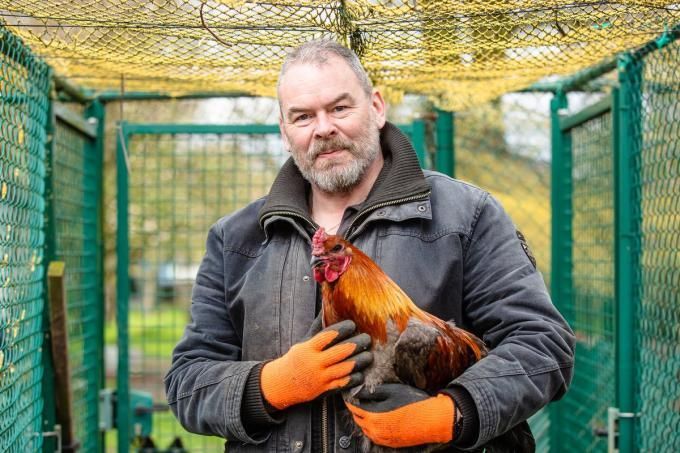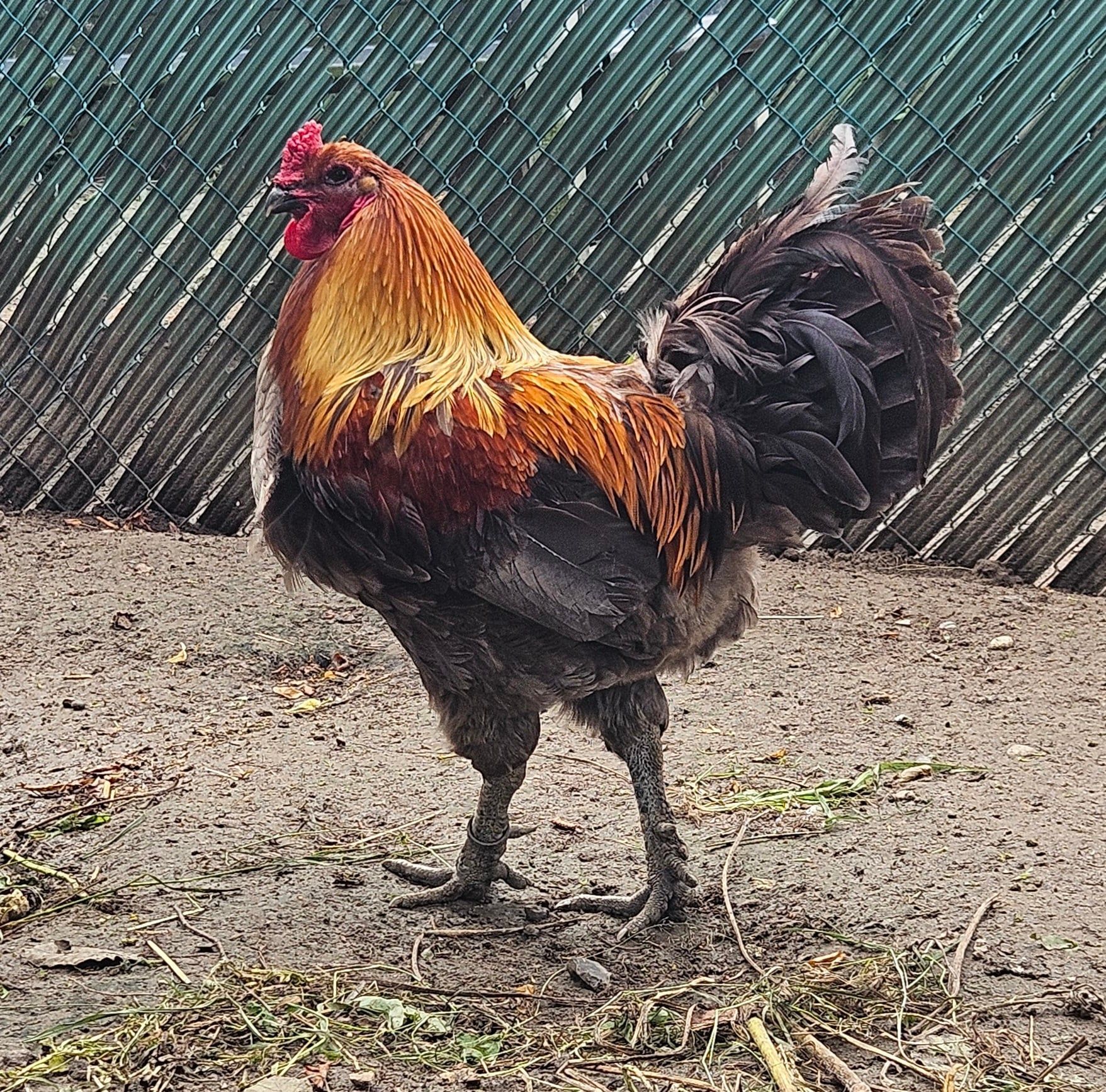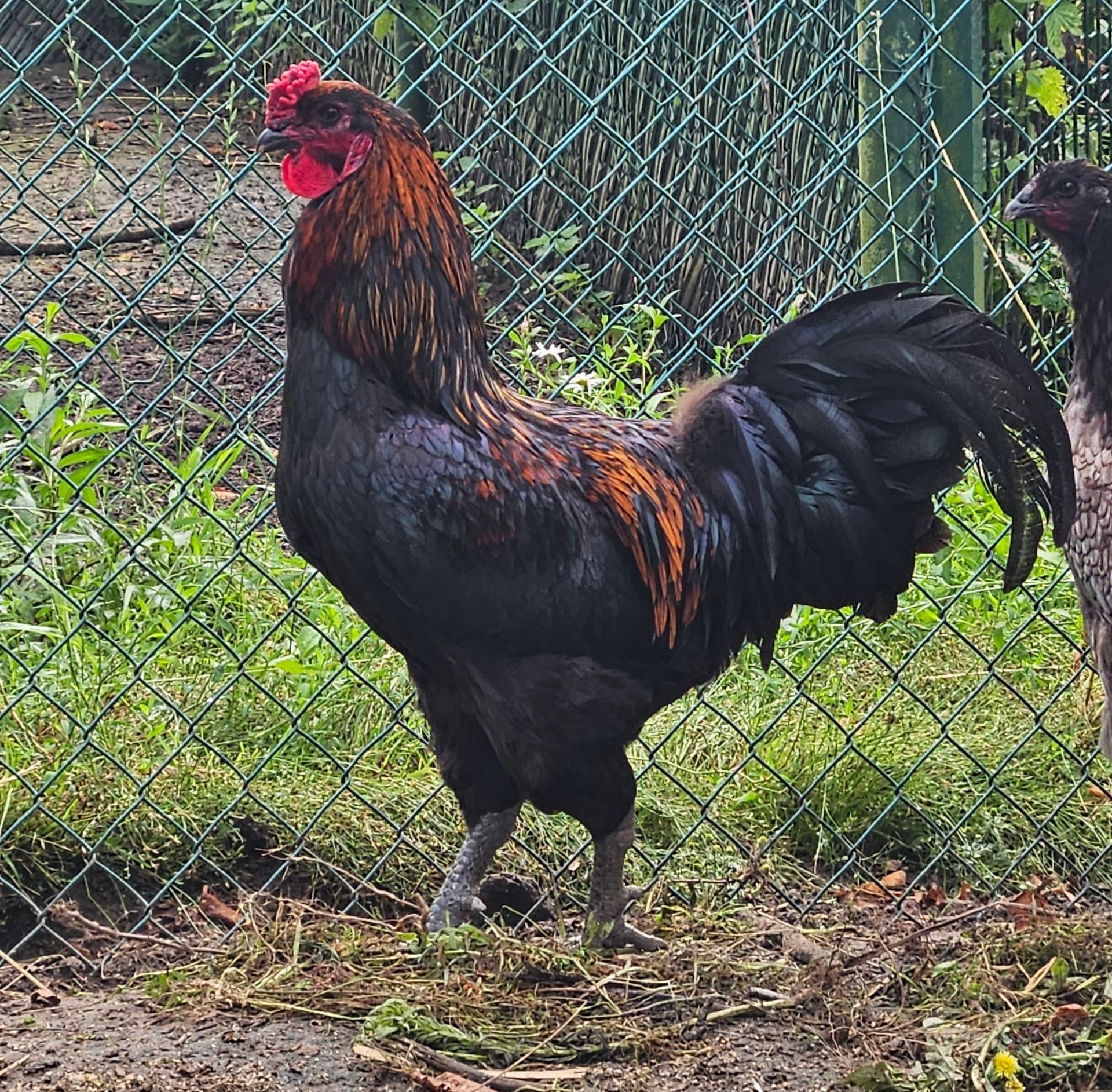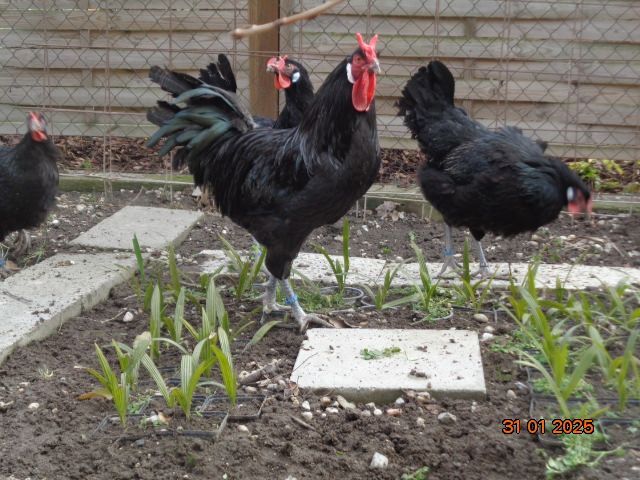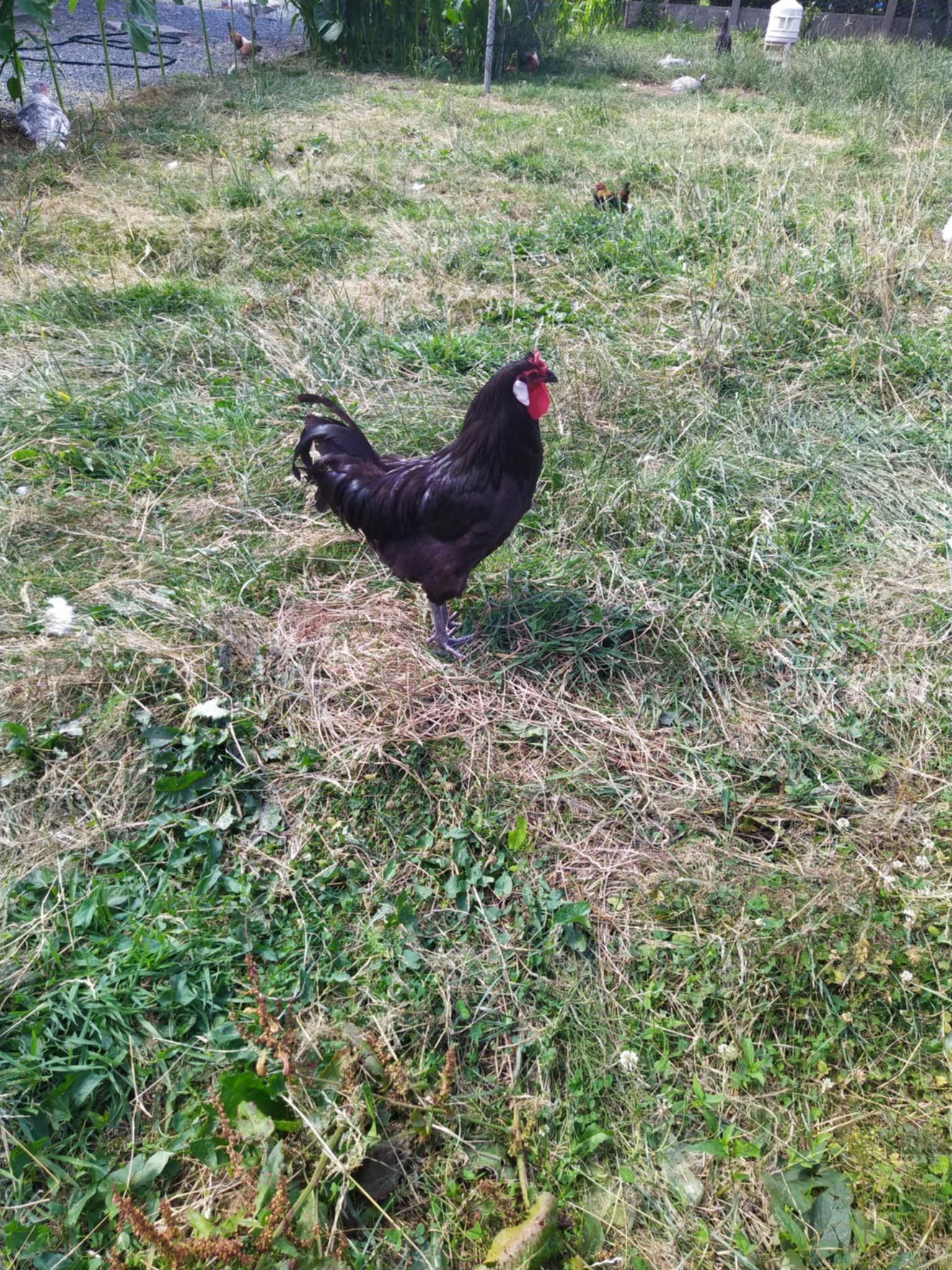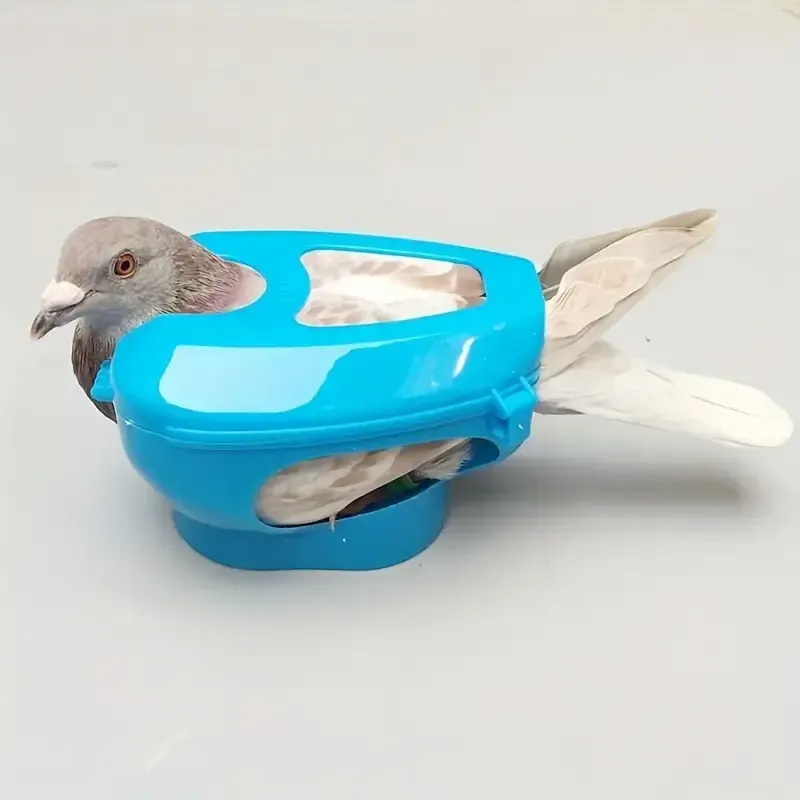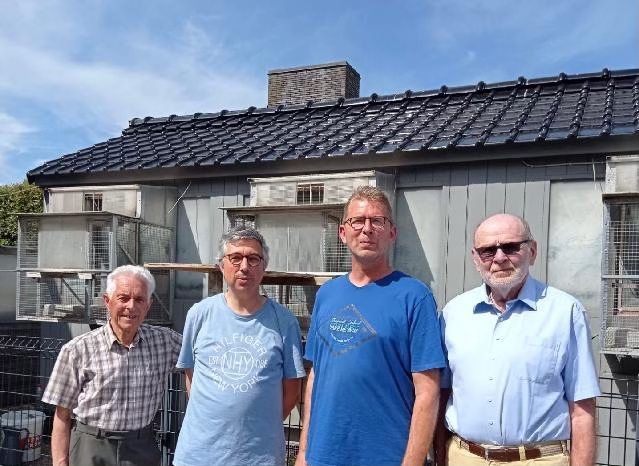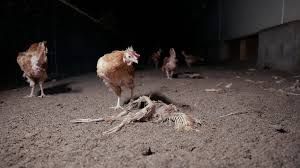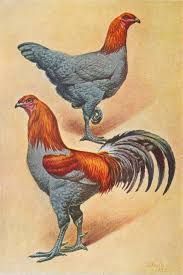Poultry Grandmasters: The Bruges Fighter
Poultry Grandmasters: The Bruges Fighter.
An Interview with Breed Expert Joost De Meyer from Belgium
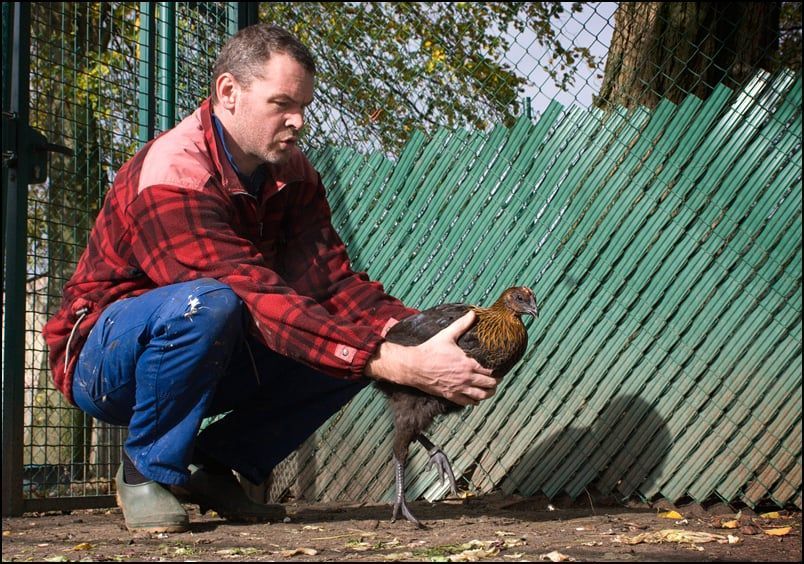
Introduction Every spring, I travel to Belgium to export hatching eggs for AOBA. A visit to Joost De Meyer – renowned breeder of Brugse Vechters (Bruges fighter) and author – is always a must. It's always a pleasure to see Joost again, to admire his breeding pens, and to listen to his insights and experiences over a warm cup of coffee. I've visited him several times already, but strangely enough, I never thought of actually recording his knowledge. That’s why I decided to do this interview: 25 questions I sent to Joost by email, which he answered with the same dedication he gives to his animals.
Enjoy reading!
Jean Kiala-Inkisi
President – African Ornamental Breeders Association (AOBA)
The Brugse vechter is known by several names: Brugse vechter, Combattant de Bruges, Bruges Blue, Bruges Game, and Bruges Fighter.
General Background and Passion
How and when did you start breeding the Brugse Vechter (Bruges fighter)?
I started breeding Bruges game in 1994. I moved to a house with a big garden and decided to
keep chickens to control the weeds. Since I don’t like to keep whatever everbody else is keeping,
I started to look around what breeds of chickens exist and to my big surprise, I found a local
breed I never heard of before, Bruges gamefowl. I was intrigued and started looking for breeders
so I could have these birds myself. I went to France, the Netherlands and Germany to buy
animals and I found a couple of local breeders who wanted to help me to get started with my
own bloodline.
What originally attracted you to this particular breed?
The fact that it was a local breed (I lived 8 kilometers from Bruges and went to school in Bruges),
that it was an extremely rare breed (at that time there were less than 10 breeders in Belgium) and
that it was a big breed. I’m 1,93 m tall and don’t see myself breeding bantams ;)
Can you tell us something about the history and origin of the Brugse Vechter (Bruges fighter)?
Its origins go back to the 1500’s. Merchants from Lombardy in Italy moved to Bruges as Bruges
was one of the most important trade cities in the world at that time. They started a system of
banks and pawn shops in Bruges. They brought along a poultry breed that was known as
Lombardic fowl. These Lombards were the direct predecendants of Bruges game. The name
Bruges game was first used in the 1850’s. The breed was officialy recognised in 1908 and the first
breed standard was established in 1909.
Breeding Experience and Selection
In your opinion, what are the most important traits to select for in this breed?
It is all about the type: backline should be almost horizontal, tail in an angle of 20°-30°, quite
high on the legs, triangular body shape, broad chest. All the rest is of secondary importance.
How many generations have you personally bred?
I’ve bred somewhere between 25 and 30 generations of Bruges gamefowl.
What challenges do you most often encounter when breeding Brugse Vechters?
For me personally, the most difficult part of breeding is to find new bloodlines to avoid too much
inbreeding. Since 90% of the bloodlines available in Belgium originate from my bloodline or have
a large percentage of my bloodline in them, it is very hard to find new blood. If I find new blood, I
don’t know which faults are incorporated in that particular bloodline, so each time I introduce
new animals, I risk raising a generation that is useless for further breeding …
At what age do you start selecting, and what do you look for at that stage?
I use different set-ups for my youngsters. First they are kept inside with a heat source untill they
are fully feathered. Then they are moved to a covered and enclosed area outside. At
approximatly 12-16 weeks they move to an outside pen. Each movement is an opportunity for
selection. Due to my long years of selection, I don’t have to worry about type. I know the body
type will be correct so the first criterium I use is eye and chest colour. The eyes should be dark
brown and I prefer an evenly coloured chest, either black or blue. If the eyes are too pale or if I
notice colour leaking in the chest, I eliminate those birds immediately.
How do you manage inbreeding or genetic diversity within your lines?
I use line breeding: father x daughter, father x grand daughter, … mother x son, mother x grand
son, … This allows me to have different strains that I can mix after a couple of years without
fearing too much inbreeding. Every now and then I try to bring new blood into my lines, but as I
said earlier, that comes with certain risks. Therefore I keep those birds separate from my other
breeders. If something goes wrong, I will still have my own bloodline.
Breed Standard and Preservation
You’ve written a book on the breed standard — what motivated you to do so?
In 2019 we (Antoon Krekelbergh, Rik Snauwaert and myself) organised a day for breeders of
Bruges gamefowl to educate them on the breed, as well in theory as hands on. I took care of the
historical part. After that day, a lot of breeders were asking if it would be possible to present
them with the texts used that day. Since Rik was already seriously ill and Antoon is a great
speaker but not a good writer, I volonteered to prepare something. This got out of hand and
turned into a book with 200+ pages.
How important is it, in your view, that breeders stick to that standard?
The breed standard is a guide line. If you want to have uniformity in a certain breed, it is
extremely important to follow that guide line. The biggest problem is the interpretation of the
breed standard. Each breeder has a tendancy to bend the interpretation of the breed standard
so that his animals are compliant to the standard. “Faults” in their bloodline are ignored. This
makes that within the breed, even though there are only a very limited number of breeders in
Belgium, there is a lot of diversity. This is also one of the reasons I decided to write my book. I
use a lot of pictures to explain how the breed standard should be interpreted. By showing what is
correct or wrong and explaining why it is correct or wrong, it’s easier for breeders to comply to
the breed standard.
What physical features are essential to consider a Brugse Vechter “typical”?
The body type is crucial: the backline should be almost horizontal, the tail should make an angle
of 20°-30°, the body shape must be triangular, wings must be carried horizontal and since it is a
game fowl, it should be quite high on its legs. The comb is a peacomb with 3 distinct rows.
Comb, ear lobes and wattles should be as small as possible. The eye colour must be dark brown
to black. It should have pronounced eye brows so that you can hardly see the eye if you look at
the head from above. The leg colour is slate blue. Beak and toe nails must be dark.
Do you see evolution or decline in the quality of the breed over the years?
There is a distinct evolution of the breed over the years. The animals that are avialable today
have hardly anything to see with the animals I started with. It took me 15 years to consolidate the
type alone. Bruges game is still a breed that needs fine tuning which makes breeding Bruges
game a challenge. Selection is key when trying to improve the breed. The biggest challenge right
now is to educate the breeders so that they all aim for the same goal.
Ethics and Image
The Brugse Vechter (Bruges fighter) has a history as a fighting breed. How do you see its role today in modern poultry breeding?
Since cock fighting is banned in Belgium since the 1880’s, the breed has evolved into a show
breed. Nevertheless, in my humble opinion, character remains one the selection criteria. Bruges
game must remain game. Beside their gameness, Bruges were originally bred for egg and meat
production. An adult rooster can weigh up to 6-6,5 kg. Eggs weigh easily 65-70 grams. Since it
takes Bruges game 2 years to reach maturity, their economic value is limited but as an
ornamental fowl, their appearance is impressive.
What do you say to people who judge the breed negatively based on its appearance or behavior?
The negative perception of the breed by the general public comes from its name: Brugse vechter,
Bruges game … People get the impression that it is an agressive breed which is a misconception.
Bruges game is no more agressive than any other poultry breed. Hens will protect their eggs and
chicks, roosters will protect their hens. As a breeder, you must follow a couple of simple rules
that are viable for any other breed: keep eye contact with the rooster, don’t turn your back on a
rooster, never get between the rooster and his hens.
In your view, how can we improve the breed’s public image?
By changing the name to one of the elder denominations of the breed, Brugse Blauwe (Bruges
blue) the conotation with their gameness would be eliminated. Since this is an impactfull
change, it is unlikely that this name change will ever happen. An easier way to change the image
of the breed is to show the birds as much as possible to the big audience. Not in a cage, but in
public animal parks.
Promotion and Education
You actively promote the breed — how do you go about doing that?
I try to inform people as good as I can. If people come to my place, I try to educate them on the
breed so that they understand what they get into. Breeding Bruges game is not as breeding
brahma. Breeding Bruges game is a work in progress and therefore a challenge. People need to
understand that to avoid deception which results in giving up on the breed.
What role do clubs or poultry exhibitions play in promoting the Brugse Vechter?
At this very moment, only 2 or maybe 3 breeders are showing Bruges game on exhibitions in
Belgium. Therefore you’ll hardly ever see more than 5 Bruges on an exhibition. If you notice that
there were only 5 or 6 Bruges game at the latest show of the Belgian Gamefowl Club, which is
one of the biggest gamefowl exhibitions in Europe, than you understand there is a problem …
Not one club in Belgium takes on an active role in promoting the breed, apart from SLE, the
organization that published my book. But their engagement stopped after they had the book
published. I find it difficult to understand that they didn’t use the publication as an opportunity
to actively promote the breed.
How can organizations like ours contribute to the preservation and appreciation of the breed?
Just the fact that your organization is spending time and attention to the breed, is a huge step
forward. Not one club in Belgium has a page on their website dedicated to a single breed, let
alone Bruges game, apart from speciality clubs that are promoting 1 specific breed
International Perspective
Do you believe the Brugse Vechter (Bruges fighter) has international potential as an ornamental or show bird?
Absolutely! Bruges game is the largest gamefowl in the world and one of the oldest recognized
breeds. Their appearance is fierce and bold and therefore ideal if you want to distinct yourself as
a breeder from the masses.
Are there differences in how the breed is viewed in Belgium compared to other countries?
Germany is very well known for modifying breed standards to their likings. Each breed is
modified to a German version of that breed. Germans for instance like the dark expressive faces
of Bruges game. To obtain those, they decided that black skin is an asset whereas in the Belgian
standard slightly blueish skin is tolerated but white skin is prefered.
Practical Tips for Breeders
What basic advice would you give to a beginner who wants to start with the Brugse Vechter (Bruges fighter)?
Make sure you know what you’re getting started with. Inform yourself. Read the breed standard
and learn how to understand this standard. Talk to known breeders and learn from their
experiences.
What are common mistakes made when keeping or breeding this breed?
People often take wrong decisions when selecting young birds. Don’t eliminate too soon
because Bruges game take time to mature and while maturing, their appearance may evolve. So
select by using the obvious criteria. Another common mistake is not selecting at all. Not all
offspring is good enough to use for further breeding. By not selecting, you allow faults to get
incorporated into your bloodline.
How important is feeding and general care in developing a strong and healthy bird?
Bruges game are big birds. They need a lot of protein to develop their musscle mass. On the
other hand, overfeeding or force feeding will result in problems with the joints. You need to find
the right balance. When the chicks are still very young, humidity is their biggest enemy. They
need a dry environment to avoid diseases such as coccidiosis. Personally, I will only use
medication in case of extreme emergency. I strongly believe in survival of the fittest to create a
strong and lively strain.
Vision for the Future
How do you see the future of the Brugse Vechter (Bruges fighter) in the next 10 to 20 years?
I don’t know … There are a couple of young, enthousiastic breeders that have started with the
breed in the last few years. They concider the breed as living heritage. Unfortunately I’m talking
about 3 or 4 persons only. I hope the breed will never go extinct in Belgium but it will depend on
the perseverance of a few persons …
What would be your ultimate wish for the preservation and recognition of this unique breed?
I just hope that some day another person will be as fanatic and enthousiastic about the breed as
myself. I hope that that person will have the resources and knowledge to actively promote the
breed so that it can be preserved. I also hope that breeders all over the world share a common
view on the breed rather than the fragmentation of today. Sometimes people forget it’s all about
the breed, it’s not about the breeders. Breeders are just the temporary administrators of a 500
year old heritage …

